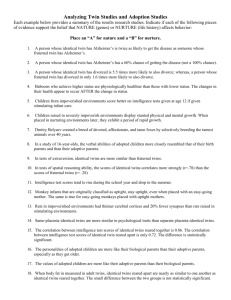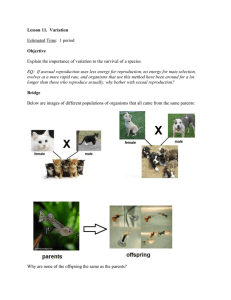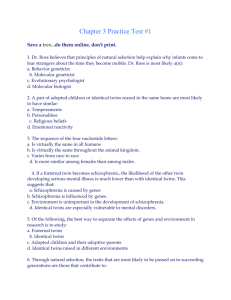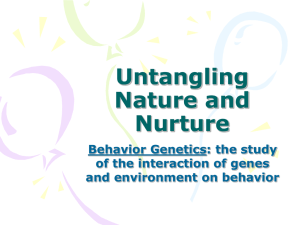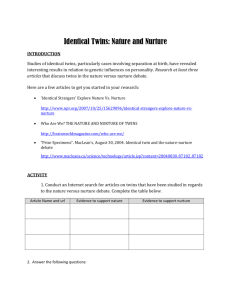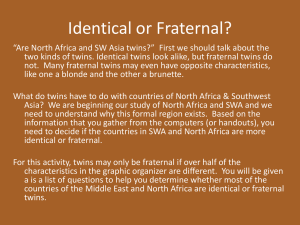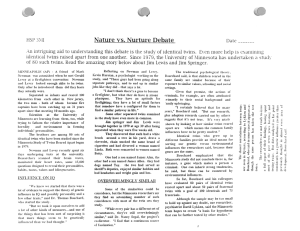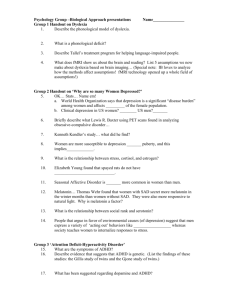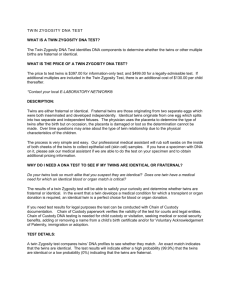Analyzing Twin Studies and Adoption Studies
advertisement
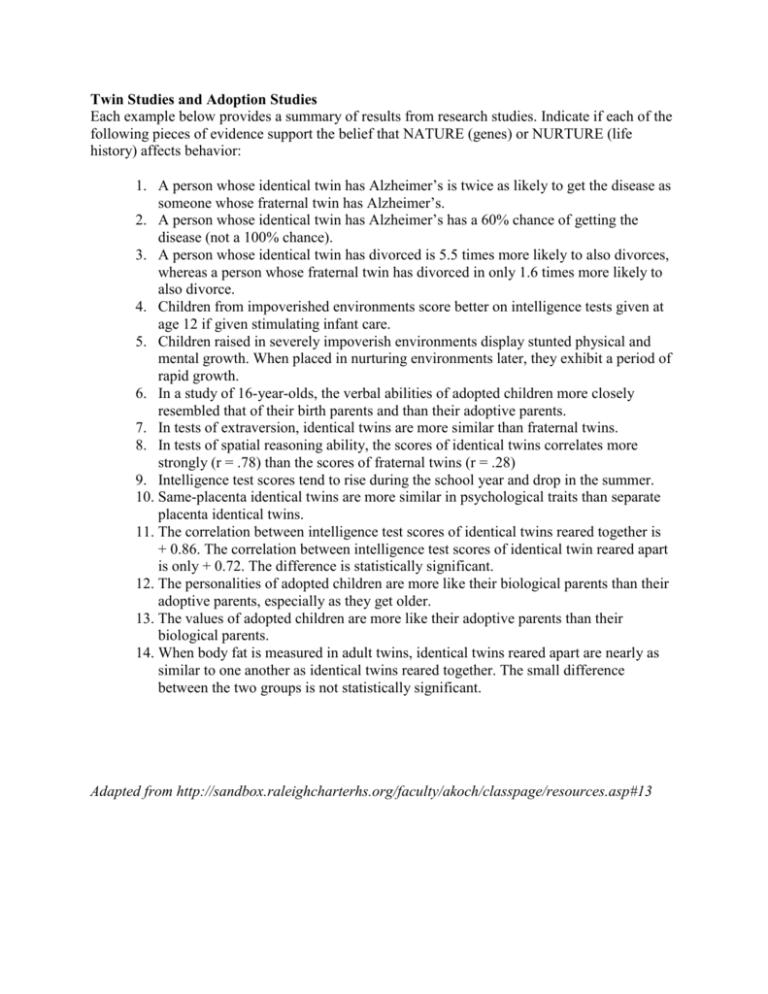
Twin Studies and Adoption Studies Each example below provides a summary of results from research studies. Indicate if each of the following pieces of evidence support the belief that NATURE (genes) or NURTURE (life history) affects behavior: 1. A person whose identical twin has Alzheimer’s is twice as likely to get the disease as someone whose fraternal twin has Alzheimer’s. 2. A person whose identical twin has Alzheimer’s has a 60% chance of getting the disease (not a 100% chance). 3. A person whose identical twin has divorced is 5.5 times more likely to also divorces, whereas a person whose fraternal twin has divorced in only 1.6 times more likely to also divorce. 4. Children from impoverished environments score better on intelligence tests given at age 12 if given stimulating infant care. 5. Children raised in severely impoverish environments display stunted physical and mental growth. When placed in nurturing environments later, they exhibit a period of rapid growth. 6. In a study of 16-year-olds, the verbal abilities of adopted children more closely resembled that of their birth parents and than their adoptive parents. 7. In tests of extraversion, identical twins are more similar than fraternal twins. 8. In tests of spatial reasoning ability, the scores of identical twins correlates more strongly (r = .78) than the scores of fraternal twins (r = .28) 9. Intelligence test scores tend to rise during the school year and drop in the summer. 10. Same-placenta identical twins are more similar in psychological traits than separate placenta identical twins. 11. The correlation between intelligence test scores of identical twins reared together is + 0.86. The correlation between intelligence test scores of identical twin reared apart is only + 0.72. The difference is statistically significant. 12. The personalities of adopted children are more like their biological parents than their adoptive parents, especially as they get older. 13. The values of adopted children are more like their adoptive parents than their biological parents. 14. When body fat is measured in adult twins, identical twins reared apart are nearly as similar to one another as identical twins reared together. The small difference between the two groups is not statistically significant. Adapted from http://sandbox.raleighcharterhs.org/faculty/akoch/classpage/resources.asp#13
